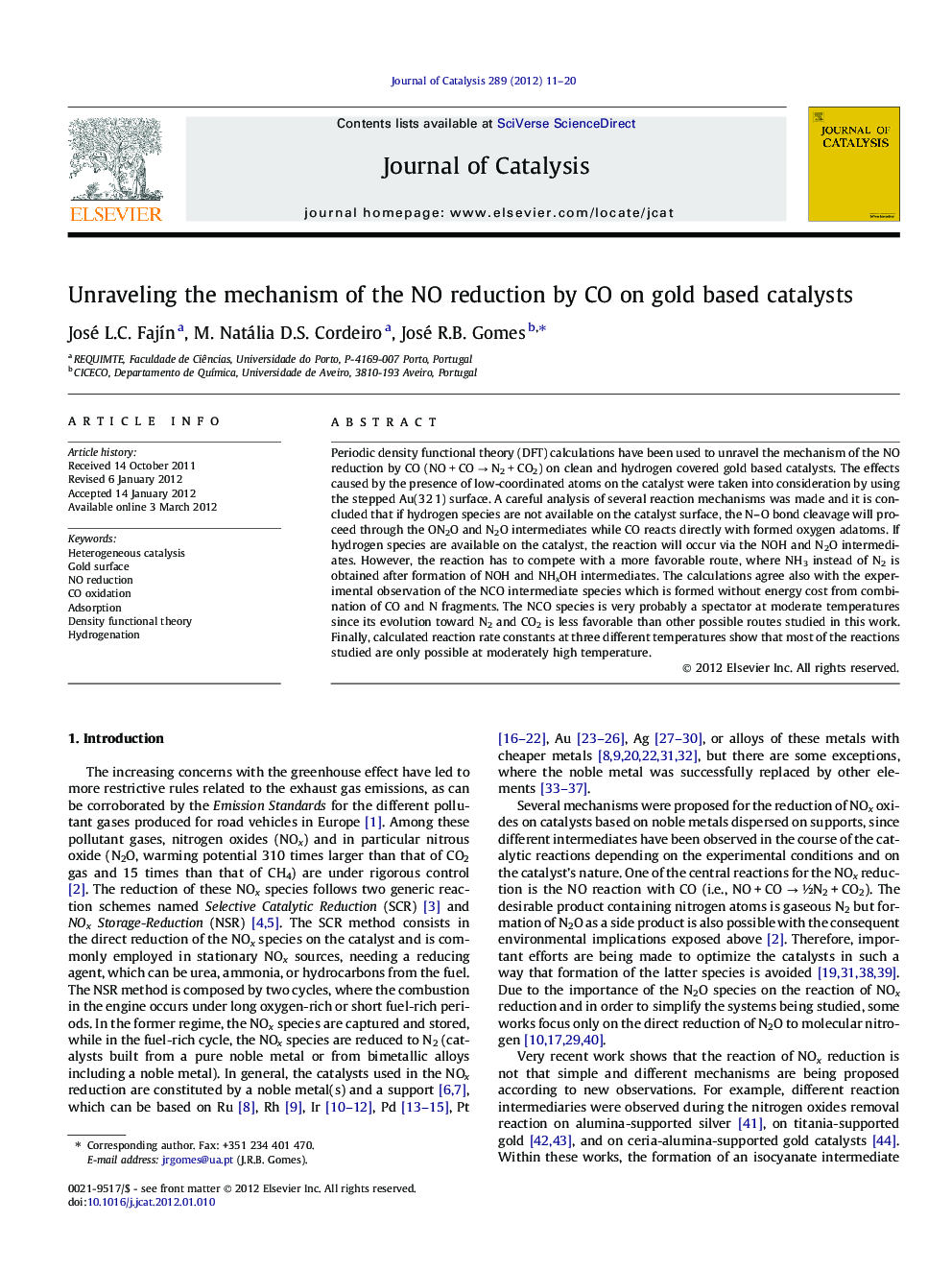| Article ID | Journal | Published Year | Pages | File Type |
|---|---|---|---|---|
| 61436 | Journal of Catalysis | 2012 | 10 Pages |
Periodic density functional theory (DFT) calculations have been used to unravel the mechanism of the NO reduction by CO (NO + CO → N2 + CO2) on clean and hydrogen covered gold based catalysts. The effects caused by the presence of low-coordinated atoms on the catalyst were taken into consideration by using the stepped Au(3 2 1) surface. A careful analysis of several reaction mechanisms was made and it is concluded that if hydrogen species are not available on the catalyst surface, the N–O bond cleavage will proceed through the ON2O and N2O intermediates while CO reacts directly with formed oxygen adatoms. If hydrogen species are available on the catalyst, the reaction will occur via the NOH and N2O intermediates. However, the reaction has to compete with a more favorable route, where NH3 instead of N2 is obtained after formation of NOH and NHxOH intermediates. The calculations agree also with the experimental observation of the NCO intermediate species which is formed without energy cost from combination of CO and N fragments. The NCO species is very probably a spectator at moderate temperatures since its evolution toward N2 and CO2 is less favorable than other possible routes studied in this work. Finally, calculated reaction rate constants at three different temperatures show that most of the reactions studied are only possible at moderately high temperature.
Graphical abstractThe presence of hydrogen species on the catalyst model surface promotes the reaction of NO reduction by CO but leads to different products from those obtained on the clean surface (N2 and CO2). Ammonia is formed instead of molecular nitrogen and the reaction goes through NHxOH intermediates leading also to the formation of water as well as CO2.Figure optionsDownload full-size imageDownload high-quality image (131 K)Download as PowerPoint slideHighlights► Intermediates are ON2O and N2O on clean Au surfaces. ► Intermediates are NOH and NHxOH on H-covered Au surfaces. ► NH3 is more likely than N2 on H-covered Au surfaces. ► Experimentally detected NCO is a spectator.
